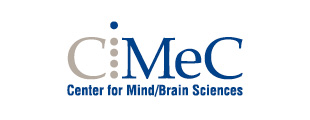Overview | Research directions | Members | Publications | Ongoing collaborations | Web
Overview
Core goals are the development of new techniques and algorithms for the investigation of signals produced by nonlinear dynamical systems. Examples of issues tackled in the lab are the assessment of optimal embedding parameters for sequences generated by chaotic systems, new ways for estimating invariant quantities such as Correlation Dimension and Maximum Lyapunov Exponent, the disentanglement of the noisy components from the deterministic one contained in a signal. These goals are pursued both through mathematical and statistical tools and by carrying out intensive numerical computations applied to experimentally-recorded and synthetic signals.
Another main research line of the laboratory is the study of multivariate, experimentally-recorded signals produced by complex systems. For example, the investigation of signals produced by the human brain makes up an issue that requires powerful nonlinear techniques to unveil brain function, to assess the existence and characterize network structures. Within this context, we are keen to investigate the role of noise in the human brain. In our lab, this kind of challenging studies is tackled by means of advanced statistical methods applied to multivariate time series sampled via magnetoencephalography (MEG) and electroencephalography (EEG). Possible additional fields of application of these techniques are climate research and economics.
Research directions
- Nonlinear time series analysis. Within the NSE Lab we work on different issues in the analysis of sequences generated by nonlinear dynamical systems. For example, we recently tackled the intertwined problems of detecting chaos and optimally embedding a chaotic sequence.
- Brain connectivity. In the NSE Lab we devised a novel algorithm to study brain connectivity and probed it on magnetoencephalography data. The method, which allows to investigate the time scale of link observability, allows us to get new insight on the dynamics of brain networks. For example we are now studying the dependence of connectivity characteristic time scales on the geometric distance between nodes.
- Diagnosis based on micro-RNA. Many scientific works regard the possible use of miRNA levels as diagnostic and prognostic tools for cancer and other patologies, like neurodegenerative diseases. Developing reliable classifiers requires tackling several crucial aspects, some of which have been widely overlooked in the scientific literature. We developed a new Bayesian classifier to be used in this challenging field, and we already demonstrated its reliability and usefulness in several works.
Members
- Leonardo Ricci, Principal Investigator
Publications
For a complete list, see Leonardo Ricci personal webpage
Ongoing collaborations
- Antonio Politi, University of Aberdeen, UK
- Michela A. Denti, CIBIO, University of Trento, Italy
Web

